Application of the Meridian Theory
The meridians are the channels and collaterals for qi (vital energy) and blood flowing throughout the body. They link up all the body parts and form a giant body map for distribution and communication. The Yellow Emperor’s Classic of Internal Medicine says, "The meridians are what make people alive, sick, disease cured or progressed. Even though beginners should have grasped the basis, only those proficient medical scholars are able to fully apply the theory.” The meridian theory remains an important and integral part for the physiology, pathology, diagnosis and treatment of Traditional Chinese medicine (TCM).
Physiological application of the meridian theory
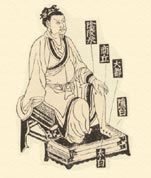 The Yellow Emperor’s Classic of Internal Medicine also says, "The meridians, by bringing qi and blood through the body, nourish and energize all internal organs, moisten tendons and bones, and facilitate joints.”
The Yellow Emperor’s Classic of Internal Medicine also says, "The meridians, by bringing qi and blood through the body, nourish and energize all internal organs, moisten tendons and bones, and facilitate joints.” Meridians work like a network system, transporting and distributing qi and blood. They link up organs, limbs, joints, bones, tendons, tissues and even skin, and provide communication between the body's interior and exterior. Through a healthy meridian system, different organs and tissues are nourished by qi and blood, which promotes their functions efficiently and ensures normal life activities. In addition, they act as part of the body's immunity, protect against external pernicious influences (anything evil that causes disease) and assist in regulating the entire body.
Pathological application of the meridian theory
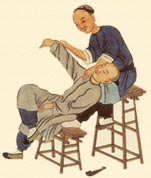
Under normal circumstance, the meridians are responsible for blood and qi distributions and for communications of the body. However, when diseases happen, their acupoints can be the entrances for evil invasion, the meridians be the pathways for disease progression or reflections of disease changes. In Chinese Medicine, "evils" (pathogens) are regarded as wind, fire, dampness, dryness, cold and summer heat. They transform and progress along the meridians to affect different body regions; they travel from one organ to other sometimes, and can also proceed from the exterior to the interior body.
In general, when external evils attack the body, they tend to affect the collateral meridians first, then go into the channel meridians, next they enter deep into the fu organs, and finally the zang organs will be their destinations. A common example is the development of cold and flu, which TCM believes is caused by external influences. Initially, the individual presents with fever and chills (affected the exterior body and attacked the collateral meridians only), then there will be headaches and body aches (also affected the exterior body but attacked the channel meridians), when further the individual begins to cough and short of breath (affected the interior body and attacked the lung), in complicated cases, the individual may also have abdominal pain and diarrhea (the lung and large intestine meridians are closely communicated, so the large intestine is sick too).
Disharmony of one organ can affect other organs because of their interconnections through the twelve regular meridians. For instance, when the liver meridian enters the trunk, it branches out to hold the stomach and also connect to the lung, therefore, a liver disharmony may associate with stomach or lung disharmony; when the kidney meridian enters the trunk, it branches out to connect the lung and heart, therefore, general swelling due to kidney disharmony may involve heart or lung disharmony. Moreover, since every two meridians are paired to facilitate organ communications, the associated two organs are more closely interacted. For example, the heart and small intestine meridians are paired, heart fire can easily transfer to the small intestine, that caused the individual to present with irritability, thirst, sores on tongue or oral cavity, burning or painful urination, scanty or bloody urine; the large intestine and lung meridians are paired, excess heat in the large intestine not only causes constipation, but may also disturb the normal lung functioning, leading to breath problems or chest stuffiness.
Disharmony of internal organs can reflect on external body through the effects of meridians, which manifest on certain body regions or associated body orifices . For example, liver qi stagnation can often show discomfort in the rib sides and lower abdomen, since the liver meridian passes through these regions; angina (discomfort due to coronary heart disease) not only feels pain in the chest, the pain may also radiate along the inner side of upper arm, since the heart meridian runs like this. Others such as toothache due to excess heat in the stomach, blood-shot eyes due to liver fire flushing to eyes are all internal pathological reactions that reflected by the meridians.
Diagnostic application of the meridian theory
Meridians run in precise routes and connect with particular organs; their manifestations can help to diagnose the disharmony and imbalance inside the body. During clinical evaluation, TCM physicians take references form individual’s symptoms, affected locations, meridian pathways and corresponding organs for diagnosis.Headaches, for example, are classified according to their affected painful spots and the distribution of the meridians in that area. Pain in the forehead indicates a Yang Ming (stomach and large intestine) Meridian type headache, pain in both sides of head indicates a Shao Yang (gall bladder and triple burner) Meridian type headache, back and neck pain is a Tai Yang (bladder and small intestine) Meridian type headache, and pain on the top of head indicates the Jue Yin (liver) Meridian type headache. Besides, individuals may also appear other seeming unrelated symptoms, but TCM physicians are able to correlate them with the situation and find out the causes. For example, Tai Yang Meridian runs through the neck region, therefore this type of headache individual often experiences neck stiffness, Yang Ming Meridian type often experiences gastric or intestinal problem, Shao Yang Meridian type often accompanies with symptoms like chest or rib sides discomfort, mouth and throat dryness, blurred vision, ear ringing or hearing loss, because the gall bladder and triple burner meridians run through and control the regions. Such specific diagnoses help tailor individual treatment plans allowing for the best outcome for relief of the headache.
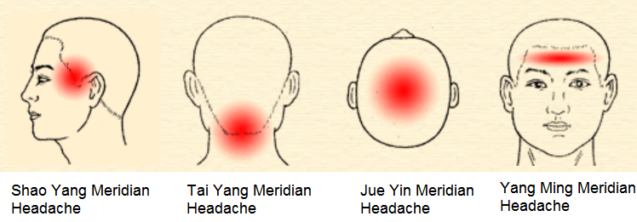
Differentiation of the affected meridians based on the headache spots
Another example is the presentation of liver disharmony. Since the liver meridian passes through the rib sides and lower abdomen, pain in those areas may indicate liver problems. When organ disharmony occurs, usually the corresponding meridian and acupoints may demonstrate abnormal changes, and it can feel painful when these points are pressed. All these meridian-related manifestations assist in TCM diagnosis.
The meridian theory is the basis of the well-known Six Meridians Diagnostic Method, which was created by a famous physician in the Han dynasty named Zhang Zhongjing (2nd to 3rd century AD). His diagnostic method had a significant impact on the future development of TCM.
Therapeutic application of the meridian theory
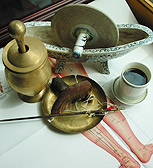 Understanding the meridian system and its relationship with the body's organs is essential in guiding TCM treatment, in particular for herbal, massage, and acupuncture therapies. Chinese medicine always aims to resume the harmony of yin and yang and maintain a free flow of qi and blood inside the body. Acupuncture and moxa therapies exert their effects by replenishing, balancing and moving the flow of qi throughout the body so normal organ functions and harmony can be resumed.
Understanding the meridian system and its relationship with the body's organs is essential in guiding TCM treatment, in particular for herbal, massage, and acupuncture therapies. Chinese medicine always aims to resume the harmony of yin and yang and maintain a free flow of qi and blood inside the body. Acupuncture and moxa therapies exert their effects by replenishing, balancing and moving the flow of qi throughout the body so normal organ functions and harmony can be resumed. Meridian differentiation is essential for the physicians in designing herbal remedies. In TCM, herbal medicines are chosen specifically for treating certain meridians and their corresponding organs. Moreover, some herbs have meridian guiding properties, which help potentiate the therapeutic effects of specific organs and meridians. In this way, meridians allow for an individually tailor-made herbal treatment plan according to a patient's disharmony pattern. For example, herbs like bitter apricot seed, unibract fritillary bulb and platycodon root mainly manifests their actions in the lung meridian, therefore most lung diseases will select them. For the above headache remedies, Tai Yang Meridian type usually adds in ephedra and cassia twig, Yang Ming Meridian type usually adds in kudzu root or similar action ones, and Shao Yang Meridian type often adds in bupleurum root or similar action ones. In the same way, heating clearing herbs are used according to their targeted organs, for example golden thread rhizome clears heart fire, baical skullcap root clears lung and large intestine fire, bupleurum root clears fire in the liver, gall bladder and triple burner, white peony root clears spleen fire, anemarrhena rhizome clears kidney fire, akebia stem clears small intestine fire, and gypsum clears stomach fire.
Similarly, understanding meridian selectivity is important for optimal therapeutic outcomes with acupuncture and massage. For example, pain in the forehead region is diagnosed as Yang Ming Meridian disharmony. Acupoints in Arm Yang Ming (large intestine) Meridian such as he gu (Li 4) can be selected to treat it. Another example is stomach ache (indigestion, dyspepsia), since the stomach is associated with the Leg Yang Ming Meridian, the corresponding acupoint of zu san li (St 36) can be chosen to relieve the pain.
When employing acupuncture treatment for tinnitus (earing ringing) and hearing loss, physicians often prescribe: ting gong (Si 19), ting hui (Gb 2), zhong zhu (Sj 3), wai guan (Sj 5), he gu (Li 4) & ling xia xue.
Among the prescribed acupoints, only ting gong and ting hui are located near the ears, their therapeutic actions are obvious, but others are far away from the diseased regions. The zhong zhu and wai guan are located at the outer side of upper arm and belong to the triple burner meridian, which not only runs around the ear, but also has a branch entering the ear. The he gu is a point on the back of hand, between the index finger and the thumb; it belongs to the large intestine meridian which branches out a divergent channel in the wrist and goes into the ear directly. The ling xia xue is located in the lower leg, 2 inches right below yang ling quan (Gb 34), an acupoint of the gall bladder meridian, which runs through the front and back of the ear and then goes into the ear. In this way, all the relevant meridians are considered in the selected acupoints.
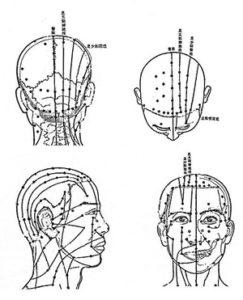
References
- Kaptchuk Ted J., Chinese Medicine : The Web That Has No Weaver, London: Rider, (2000).
- Williams Tom, Complete Chinese Medicine, Bath, Mustard, (1999).
- Zhang Enqin (Chief Editor), Basic Theories of Chinese Medicine, Publishing House of Shanghai College of Traditional Chinese Medicine, 1988.
- Qiu Maoliang (Chief Editor), Acupuncture and Moxibustion, Shanghai Science & Technology Publishing House, 1983.
- Li Qizhong (Edited), Detail Explanations on Chinese Medicine Basic Theories, Publishing House of Shanghai Chinese Medicine University, 2006.


